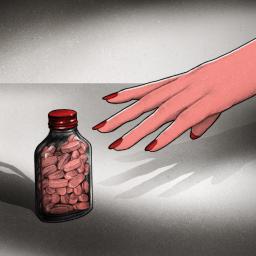 |
by Rhiannon Williams on (#6HR4C)
This is today's edition ofThe Download,our weekday newsletter that provides a daily dose of what's going on in the world of technology. Weight-loss drugs: 10 Breakthrough Technologies 2024 One-third of US adults have obesity, a condition that makes them more susceptible to heart disease, diabetes, and cancer. However, there's huge hope that anti-obesity drugs-including Wegovy...
|
MIT Technology Review
| Link | https://www.technologyreview.com/ |
| Feed | https://www.technologyreview.com/stories.rss |
| Updated | 2025-12-18 01:32 |
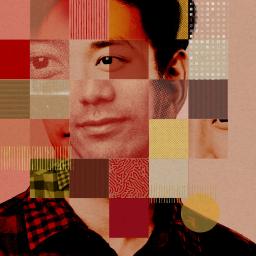 |
by Zeyi Yang on (#6HQZ8)
This story first appeared in China Report, MIT Technology Review's newsletter about technology in China.Sign upto receive it in your inbox every Tuesday. Happy New Year! I hope you had a good rest over the holidays and feel ready to take on 2024. But for one more time, please allow me to indulge in a...
|
 |
by Casey Crownhart on (#6HQZ9)
MIT Technology Review's What's Next series looks across industries, trends, and technologies to give you a first look at the future. You can read the rest of our series here. It's a turbulent time for offshore wind power. Large groups of turbines installed along coastlines can harness the powerful, consistent winds that blow offshore. Given...
|
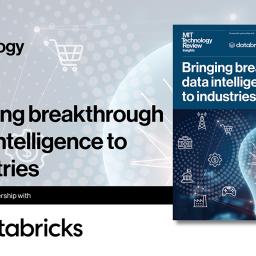 |
by MIT Technology Review Insights on (#6HQ35)
As organizations recognize the transformational opportunity presented by generative AI, they must consider how to deploy that technology across the enterprise in the context of their unique industry challenges, priorities, data types, applications, ecosystem partners, and governance requirements. Financial institutions, for example, need to ensure that data and AI governance has the built-in intelligence to...
|
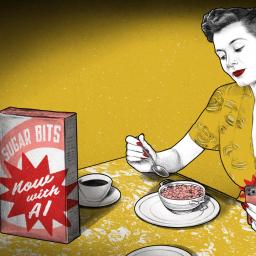 |
by Rhiannon Williams on (#6HQ36)
This is today's edition ofThe Download,our weekday newsletter that provides a daily dose of what's going on in the world of technology. AI for everything: 10 Breakthrough Technologies 2024 When OpenAI launched ChatGPT in November 2022, nobody knew what was coming. But that low-key release changed everything, and by January, ChatGPT had become the fastest-growing...
|
 |
by Melissa Heikkilä on (#6HQ0Z)
This story originally appeared in The Algorithm, our weekly newsletter on AI. To get stories like this in your inbox first, sign up here. Happy new year! I hope you had a relaxing break. I spent it up in the Arctic Circle skiing, going to the sauna, and playing card games with my family by...
|
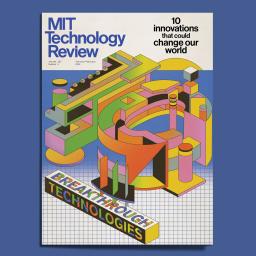 |
by Rhiannon Williams on (#6HP1H)
This is today's edition ofThe Download,our weekday newsletter that provides a daily dose of what's going on in the world of technology. Introducing: MIT Technology Review's 10 Breakthrough Technologies for 2024 The start of a new year offers a great opportunity to reflect while also thinking about what's to come. That is especially true for...
|
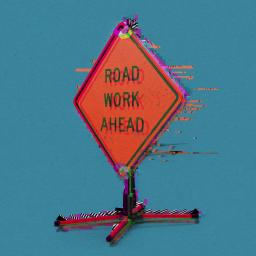 |
by Tate Ryan-Mosley on (#6HP1J)
This article is from The Technocrat, MIT Technology Review's weekly tech policy newsletter about power, politics, and Silicon Valley. To receive it in your inbox every Friday, sign up here. In the US and elsewhere, 2023 was a blockbuster year for artificial intelligence and AI regulation, and this next year is guaranteed to bring even...
|
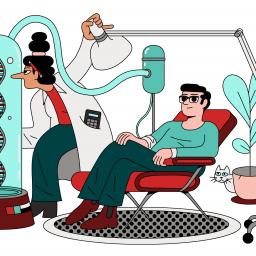 |
by Antonio Regalado on (#6HNZ2)
WHO CRISPR Therapeutics, Editas Medicine, Precision BioSciences, Vertex Pharmaceuticals WHEN Now The first gene-editing cure has arrived. Grateful patients are calling it life changing." It was only 11 years ago that scientists first developed the potent DNA-snipping technology called CRISPR. Now they've brought CRISPR out of the lab and into real medicine with a treatment...
|
 |
by Casey Crownhart on (#6HNZ1)
WHO Daikin, Mitsubishi, Viessmann WHEN Now We've entered the era of the heat pump. Heat pumps are appliances that can cool and heat spaces using electricity. Many buildings today are still heated with fossil fuels, specifically natural gas. Switching to electric heat pumps that run on renewable energy could help homes, offices, and even manufacturing...
|
 |
by Mat Honan on (#6HNZ0)
WHO Bluesky, Discord, Mastodon, Nostr, Threads WHEN Now For the better part of 17 years, the roiling, rolling, fractious, sometimes funny, sometimes horrifying, never-ever-ending global conversation had a central home: Twitter. If you wanted to know what was happening and what people were talking about right now, it was the only game in town. But...
|
 |
by Abdullahi Tsanni on (#6HNYZ)
WHO Eli Lilly, Novartis, Novo Nordisk, Pfizer, Viking Therapeutics WHEN Now One-third of US adults have obesity, a condition that makes them more susceptible to heart disease, diabetes, and cancer. Anti-obesity drugs-including Wegovy and Mounjaro-could help address this public health crisis. Success stories are everywhere online, from Reddit to TikTok. Novo Nordisk, the company behind...
|
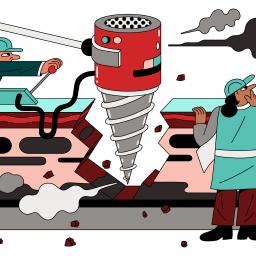 |
by June Kim on (#6HNYY)
WHO AltaRock Energy, Fervo Energy, Utah FORGE lab WHEN 3 to 5 years Geothermal heat, an abundant and carbon-free energy source, offers an alternative to fossil fuels that doesn't vary with the weather or time of day. However, conventional geothermal plants require specific geological conditions-in particular, permeable rocks with water sources. Because of this, geothermal...
|
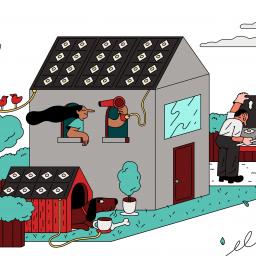 |
by Emma Foehringer Merchant on (#6HNYX)
WHO Beyond Silicon, Caelux, First Solar, Hanwha Q Cells, Oxford PV, Swift Solar, Tandem PV WHEN 3 to 5 years In November 2023, a buzzy solar technology broke yet another world record for efficiency. The previous record had existed for only about five months-and it likely won't be long before it too is obsolete. This...
|
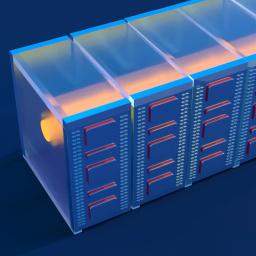 |
by Mike Orcutt on (#6HNYW)
WHO Advanced Micro Devices, Intel, Universal Chiplet Interconnect Express WHEN Now Packaging. It may sound boring, but it's an essential part of building computer systems. Now companies are defining what that looks like for a new generation of machines. For decades, chipmakers have improved performance by making transistors smaller and cramming more of them...
|
 |
by Sophia Chen on (#6HNYV)
WHO Oak Ridge National Lab, Julich Supercomputing Centre, China's Supercomputing Center in Wuxi WHEN Now In May 2022, the global supercomputer rankings were shaken up by the launch of Frontier. Now the fastest supercomputer in the world, it can perform more than 1 quintillion (1018) floating-point operations per second. That's a 1 followed by 18...
|
 |
by Rhiannon Williams on (#6HM4D)
This is today's edition ofThe Download,our weekday newsletter that provides a daily dose of what's going on in the world of technology. The race to produce rare earth materials Abandoning fossil fuels and adopting lower-carbon technologies are our best options for warding off the accelerating threat of climate change. And access to rare earth elements,...
|
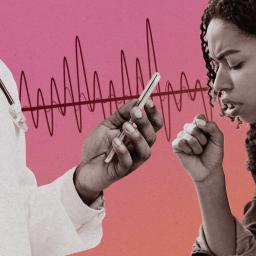 |
by Cassandra Willyard on (#6HM06)
This article first appeared in The Checkup, MIT Technology Review's weekly biotech newsletter. To receive it in your inbox every Thursday, and read articles like this first,sign up here. This week I came across a paper that uses AI in a way that I hadn't heard of before. Researchers developed a smartphone app that can...
|
 |
by Mureji Fatunde on (#6HM08)
Abandoning fossil fuels and adopting lower-carbon technologies are our best options for warding off the accelerating threat of climate change. Access to rare earth elements, key ingredients in many of these technologies, will partly determine which countries will meet their goals for lowering emissions or increasing the proportion of electricity generated from non-fossil-fuel sources. But...
|
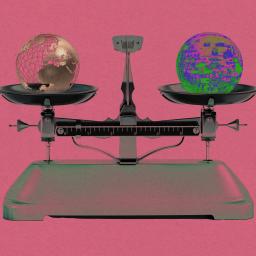 |
by Tate Ryan-Mosley, Melissa Heikkilä, Zeyi Yang on (#6HM07)
MIT Technology Review's What's Next series looks across industries, trends, and technologies to give you a first look at the future. You can read the rest of our series here. In 2023, AI policy and regulation went from a niche, nerdy topic to front-page news. This is partly thanks to OpenAI's ChatGPT, which helped AI...
|
 |
by MIT News Staff on (#6HKA2)
Thinking big, aiming high, and making a difference were rules of the road embedded during my time at MIT," says Irene Cheng, SM '78, who went on to a successful Wall Street career as a managing director at Lazard Asset Management after earning a graduate degree in chemical engineering from the Institute. I was helped...
|
 |
by Joshua Sariñana, PhD ’11 on (#6HKA3)
Filmmaker Suneil Sanzgiri, SM '17, uses diverse media and techniques to delve deeply into his cultural identity, connecting him with the colonial history of his family's ancestral home: Goa, India. An alumnus of the Art, Culture, and Technology (ACT) program, Sanzgiri uses a unique approach combining such things as analysis of historical texts and 3D...
|
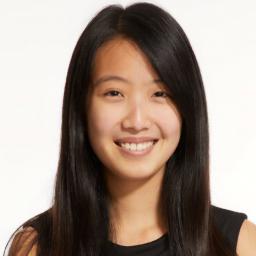 |
by Julie Fox on (#6HKA4)
Customer service experiences can really stick with you-a positive interaction can inspire brand loyalty, and a negative one can prompt a complete boycott. But encounters with automated customer interfaces, which often rely on limited phone menus or inept chatbots, rarely generate rave reviews. So Liz Tsai '11, SM '13, came up with an alternative. In...
|
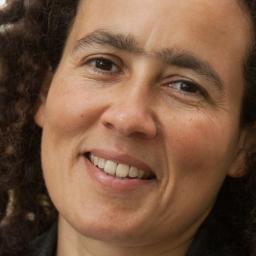 |
by Kathryn M. O’Neill on (#6HKA5)
What can be done to prevent war? That's the question that drives Neta Crawford, PhD '92, who chaired the political science department at Boston University from 2018 until 2022 and is now a professor of international relations at Oxford University. The answer, she believes, is for people to reject armed conflict as an acceptable way...
|
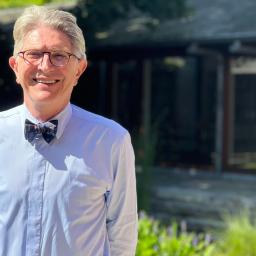 |
by Michael Blanding on (#6HKA6)
When Royal Dutch Shell solicited proposals for a new research center in Belgium in 1985, it received the usual series of plans for lifeless concrete bunkers. Philippe Samyn, SM '73, took a different tack. Noting the site's sloping valley and charming beech forest, he envisioned a grouping of administrative buildings and labs connected by streets...
|
 |
by Ken Shulman on (#6HKA7)
In 1936, when John Francis Brady '48, SM '50, was in second grade, he was diagnosed with rheumatic fever. His doctors, following the practice of the day, prescribed complete rest. He wasn't even allowed to climb stairs. So when it came time to start third grade, which was taught on the third floor of his...
|
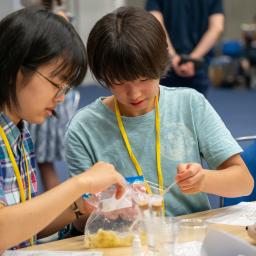 |
by Julie Fox on (#6HKA8)
When Sawaka Kawashima Romaine '01 became president of MIT's Club of Japan in 2022, she was the first woman to hold the office in the club's more than 110-year history. Understandably, she felt a lot of pressure. I had just given birth to my first child, and I had also recently changed jobs, so it...
|
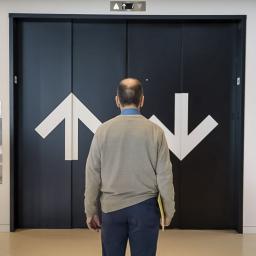 |
by Barry Duncan on (#6HKA9)
When I was a teenager in South Jersey and getting a driving lesson from my dad, he casually mentioned that I should look in the rearview mirror every now and then to see what was going on behind me. To borrow an expression from my Italian grandmother, I remained with my mouth open-that is, I...
|
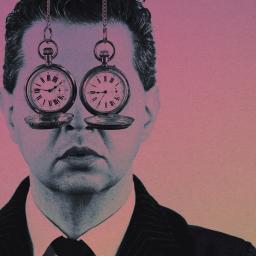 |
by Rhiannon Williams on (#6HK7D)
This is today's edition ofThe Download,our weekday newsletter that provides a daily dose of what's going on in the world of technology. What's next for AI in 2024 This time last year our AI writers did something reckless. In an industry where nothing stands still, they had a go at predicting the future. Turns out,...
|
 |
by Casey Crownhart on (#6HK4Y)
This article is from The Spark, MIT Technology Review's weekly climate newsletter. To receive it in your inbox every Wednesday, sign up here. The world is building and making things as never before, from roads and hospitals to vehicles and furniture. That's good news for people who benefit from new goods and infrastructure, but it's...
|
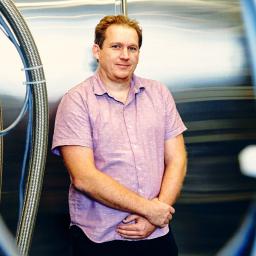 |
by Michael Brooks on (#6HK2S)
In the past 20 years, hundreds of companies, including giants like Google, Microsoft, and IBM, have staked a claim in the rush to establish quantum computing. Investors have put in well over $5 billion so far. All this effort has just one purpose: creating the world's next big thing. Quantum computers use the counterintuitive rules...
|
 |
by Gouri Sharma on (#6HK2T)
When British forces raided the African kingdom of Benin in the late 19th century, they took with them thousands of sculptures dating back centuries. Sold to private collectors and museums in the Global North, the artifacts, known as the Benin Bronzes, included ceremonial swords, ritualistic statues, and musical instruments that belonged to the Edo people....
|
 |
by Melissa Heikkilä, Will Douglas Heaven on (#6HK2V)
This time last year we did something reckless. In an industry where nothing stands still, we had a go at predicting the future. How did we do? Our four big bets for 2023 were that the next big thing in chatbots would be multimodal (check: the most powerful large language models out there, OpenAI's GPT-4...
|
 |
by Rhiannon Williams on (#6HJA7)
This is today's edition ofThe Download,our weekday newsletter that provides a daily dose of what's going on in the world of technology. How electricity could help tackle a surprising climate villain Cement hides in plain sight-it's used to build everything from roads and buildings to dams and basement floors. But it's also a climate threat....
|
 |
by Allison Guy on (#6HJ84)
As sweltering ocean temperatures make graveyards of coral reefs across the Caribbean and beyond, a team of scientists is scrambling to cool corals down. Way down. To -200 C. The Coral Biobank Alliance, helmed in part by Smithsonian Conservation Biology Institute biologist Mary Hagedorn, aims to cryopreserve or otherwise keep in captivity the roughly 1,000...
|
 |
by Casey Crownhart on (#6HJ6T)
Cement hides in plain sight-it's used to build everything from roads and buildings to dams and basement floors. But there's a climate threat lurking in those ubiquitous gray slabs. Cement production accounts for more than 7% of global carbon dioxide emissions-more than sectors like aviation, shipping, or landfills. Humans have been making cement, in one...
|
 |
by Rhiannon Williams on (#6HHHC)
This is today's edition ofThe Download,our weekday newsletter that provides a daily dose of what's going on in the world of technology. We've never understood how hunger works. That might be about to change. When you're starving, hunger is like a demon. It awakens the most ancient and primitive parts of the brain, then commandeers...
|
 |
by Adam Piore on (#6HHE1)
You haven't seen hungry until you've seen Brad Lowell's mice. A few years ago, Lowell-a Harvard University neuroscientist-and a postdoc, Mike Krashes, figured out how to turn up the volume on the drive for food as high as it can go. They did it by stimulating a bundle of neurons in the hypothalamus, an area...
|
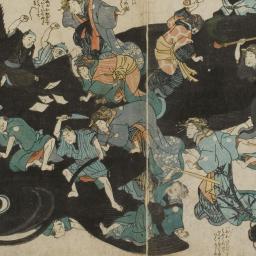 |
by Allie Hutchison on (#6HF5K)
In September 2017, about two minutes before a magnitude 8.2 earthquake struck Mexico City, blaring sirens alerted residents that a quake was coming. Such alerts, which are now available in the United States, Japan, Turkey, Italy, and Romania, among other countries, have changed the way we think about the threat of earthquakes. They no longer...
|
 |
by Brady Helwig, PJ Maykish on (#6HEFN)
In its final weeks, the Obama administration released a report that rippled through the federal science and technology community. Titled Ensuring Long-Term US Leadership in Semiconductors, it warned that as conventional ways of building chips brushed up against the laws of physics, the United States was at risk of losing its edge in the chip...
|
 |
by David Rotman on (#6HDPV)
The surge of climate-tech startups seeking to reinvent clean energy and transform huge industrial markets is fueling optimism about our prospects for addressing climate change. Tens of billions are pouring into these venture-backed companies in just about every field you can imagine, from green steel to nuclear fusion. As I explain in Climate tech is...
|
 |
by David Hambling on (#6HDNM)
When athletes or soldiers have a concussion, the most beneficial course of action is to simply get them off the playing field or out of the action so they can recover. Yet much about head injuries remains a mystery, including the reasons why some impacts result in concussion while others don't. But new measuring devices...
|
 |
by Kathryn Miles on (#6HD2M)
What is the true value of a honeybee? A mountain stream? A mangrove tree? Gretchen Daily, cofounder and faculty director of the Stanford Natural Capital Project, has dedicated her career to answering such complex questions. Using emerging scientific data and the project's innovative open-source software, Daily and her team help governments, international banks, and NGOs...
|
 |
by Cassandra Willyard on (#6HBDB)
What if all you needed to lose weight were some good vibrations? That's the idea behind a new weight-loss pill that tricks the brain into thinking the stomach is full, by stimulating the nerve endings that sense when the stomach expands. The capsule, about the size of a large vitamin, houses a tiny motor that...
|
 |
by Charlotte Jee on (#6HB5R)
This is today's edition ofThe Download,our weekday newsletter that provides a daily dose of what's going on in the world of technology. The worst technology failures of 2023 Welcome to our annual list of the worst technologies. This year, one technology disaster in particular holds lessons for the rest of us: the Titan submersible that...
|
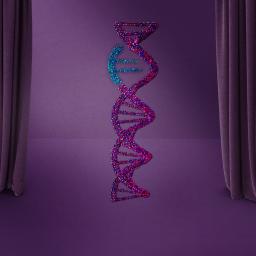 |
by Cassandra Willyard on (#6HB3K)
This article first appeared in The Checkup, MIT Technology Review's weekly biotech newsletter. To receive it in your inbox every Thursday, and read articles like this first,sign up here. Welcome back to The Checkup. This will be our last issue of 2023, so this week I've been reflecting on our biotechnology coverage over the past...
|
 |
by Antonio Regalado on (#6HB3M)
Welcome to our annual list of the worst technologies. This year, one technology disaster in particular holds lessons for the rest of us: the Titan submersible that imploded while diving to see the Titanic. Everyone had warned Stockton Rush, the sub's creator, that it wasn't safe. But he believed innovation meant tossing out the rule...
|
 |
by Patrick Sisson on (#6HB18)
When the Canadian engineer Harold Orr and his colleagues began designing an ultra-efficient home in Saskatchewan in the late '70s, responding to a provincial conservation mandate during the oil embargo, they knew that the trick wasn't generating energy in a greener way, but using less of it. They needed to make a better thermos, not...
|
 |
by Zeyi Yang on (#6HB17)
If you think about it, there are so many people we meet on the internet daily whose real names we will never know. The TikTok teen who learned the trendy new dance, the anime artist who uploaded a new painting, the random commenter who posted under a YouTube video you just watched. That's the internet...
|
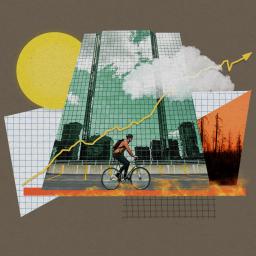 |
by Charlotte Jee on (#6HA9X)
This is today's edition ofThe Download,our weekday newsletter that provides a daily dose of what's going on in the world of technology. Recapturing early internet whimsy with HTML Websites weren't always slick digital experiences. There was a time when surfing the web involved opening tabs that played music against your will and sifting through walls...
|